Change Management Models for Workplace Transformation
From Corporate Real Estate Journal Volume 6, Number 4

Colette Temmink
Chief Strategy and Product Officer | Co-Founder
Today’s corporate real estate professionals continue to face the ongoing opportunity, as well as challenge, of finding ways to lower real estate life-cycle costs while simultaneously enabling employee productivity. To achieve efficiencies, they remain focused on developing new ways to deliver a building’s hard and soft services, preferred supplier relationships, streamlined processes, proactive maintenance and smart building technologies. Enabling employee productivity, however, falls into its own category altogether.
Although leaders remain unclear on how exactly to measure the productivity of knowledge workers, many recognize the importance of employee engagement and its relationship towards realizing a company’s objectives.3 For example, the behavior of engaged employees can lead to a positive effect on employee performance, which can influence a company’s success.7 Similarly, Harter, Schmidt and Hayes8 completed a meta-analysis of data on 7,939 business units from 36 firms and found employee engagement is directly connected to the outcomes of a business. In addition, research by Aon Hewitt1 highlighted that a 5 per cent increase in employee engagement correlates to a revenue increase of 3 percent.
The good news is there are several real estate initiatives that can improve the employee experience. These initiatives include redesigning the workplace to be more collaborative, providing more technology options to promote flexibility, delivering hospitality level of service, offering wellness/ concierge services to improve employees’ overall well-being … or all of the above. Redesigning the physical workspace is a common approach companies take when trying to improve employee engagement. Many companies recognize that the work environment represents a key differentiator in the ongoing competition for talent. Huddle rooms, open work plans, high-tech conference rooms and hoteling are all good examples of adapting the workspace to meet employees’ needs and increase collaboration.
As CREs look to third-party facilities partners for help in improving the employee experience, this ask is driving a shift in the scope of facility services, broadening them from straightforward building management services to including occupant services as well, such as wellness and concierge services.
While LEED Certification set the benchmark for developing environmentally friendly buildings, more companies are now directing their efforts toward the human side of sustainability. The relatively new WELL Building Standard is an example of a rating system that focuses on the health and well-being of occupants.
As corporate real estate continues to evolve, facilities partners are increasingly being asked to work smarter and to do more with less. Although still in their infancy, workplace wellness and work/life balance services are not only a smart way to provide long-term benefits to employees that far outweigh their initial investment, but they also provide an opportunity for real estate professionals to broaden their knowledge and expertise into new areas.
Notes
(1) Aon Hewitt (2015), ‘Trends in Global Employee Engagement Making Engagement Happen’. Available at http://www.aon.com/attachments/human-capital-consulting/2015-Trends- in-Global-Employee-Engagement-Report. pdf (accessed 24th May, 2017).
(2) Berry, L. L., Mirabito, A. M. and Baun, W. B. (2010), ‘What’s the Hard Return on Employee Wellness Programs?’. Harvard Business Review, Vol. 88, No. 12, pp. 104–112.
(3) CoreNet (June 2016), ‘The Bigger Picture: The Future of Corporate Real Estate’. Available at http://www.corenetglobal.org/KCO/content.aspx?ItemNumber=33143 (accessed 24th May, 2017).
(4) Fry, R. (25th April, 2016), ‘Millennials Overtake Baby Boomers as America’s Largest Generation’. Pew Research Center. Available at http://www. pewresearch.org/fact-tank/2016/04/25/ millennials-overtake-baby-boomers/ (accessed 24th May, 2017).
(5) Gallup (13th January, 2016), ‘Employee Engagement in U.S. Stagnant in 2015’. Available at http://www.gallup.com/ poll/188144/employee-engagement- stagnant-2015.aspx (accessed 24th May, 2017).
(6) Gallup (13th November, 2015). ‘What Job-Hopping Employees Are Looking For’. Available at http://www.gallup.com/ businessjournal/186602/job-hopping- employees-looking.aspx (accessed 24th May, 2017).
(7) Gupta, N. and Sharma, V. (2016), ‘Exploring Employee Engagement—A Way to Better Business Performance’. Global Business Review, Vol. 17, No. 3 (Supplement), pp. 45S–63S: 10.1177/0972150916631082
(8) Harter, J. K., Schmidt, F. L. and Hayes, T. L. (2002), ‘Business-unit-level Relationship between Employee Satisfaction, Employee Engagement, and Business Outcomes: A Meta-analysis’. Journal of Applied Psychology, Vol. 87, No. 2, pp. 268–279. doi: http://dx.doi. org/10.1037/0021-9010.87.2.268
(9) Hirtle, C. (2016). ‘Employee engagement for workplace success’, Canadian Journal of Medical Laboratory Science, Vol. 78, No. 2, p. 5. Available at https://search. proquest.com/docview/1826440225?acco untid=35812 (accessed 24th May, 2017).
(10) Lima T. H. (15th January, 2009), ‘Concierge Services Can Lead to Satisfied Employees’. Society for Human Resource Management. Available at https://www. shrm.org/resourcesandtools/hr-topics/ benefits/pages/conciergeservicescanlead tosatisfiedemployees.aspx (accessed 24th May, 2017).

